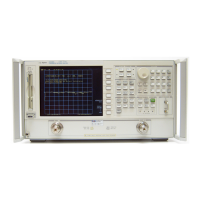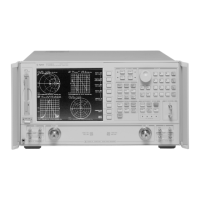6-6 Programmer’s Guide
Trace Data Transfers
Using Binary Data Encoding
Using Binary Data Encoding
The previous section describes how to query the measurement trace, and
transfer it into your program using ASCII encoding. Binary encoding can
be used for faster data transfers, as shown in the table below:
Table 6-1 Trace Transfer Times (typical)
When using binary data transfers, the entire trace is sent from the
analyzer to your program in a block called a definite length block. The
details of block data are described in detail in Chapter 4, “Data Types
and Encoding.” The definite length block contains a header and a data
section. The header indicates how many bytes are in the data section.
In order to read the definite length block, your program must first read
the header, and then read the data section. Refer to the example program
REALDATA in the Example Programs Guide for an example of how to do
this.
In the REALDATA program, you will notice the following lines which
read the definite block header:
180 ENTER @Hp8711 USING "%,A,D";A$,Digits
190 ENTER @Hp8711 USING "%,"&VAL$(Digits)&"D";Bytes
and these lines which read the data section:
200 ASSIGN @Hp8711;FORMAT OFF
210 ENTER @Hp8711;Data1(*)
Number
of Trace
Points
Transfer Times (ms)
Binary
Transfer
ASCII
Transfer
51 21 47
201 23 164
401 30 314
1601 82 1200

